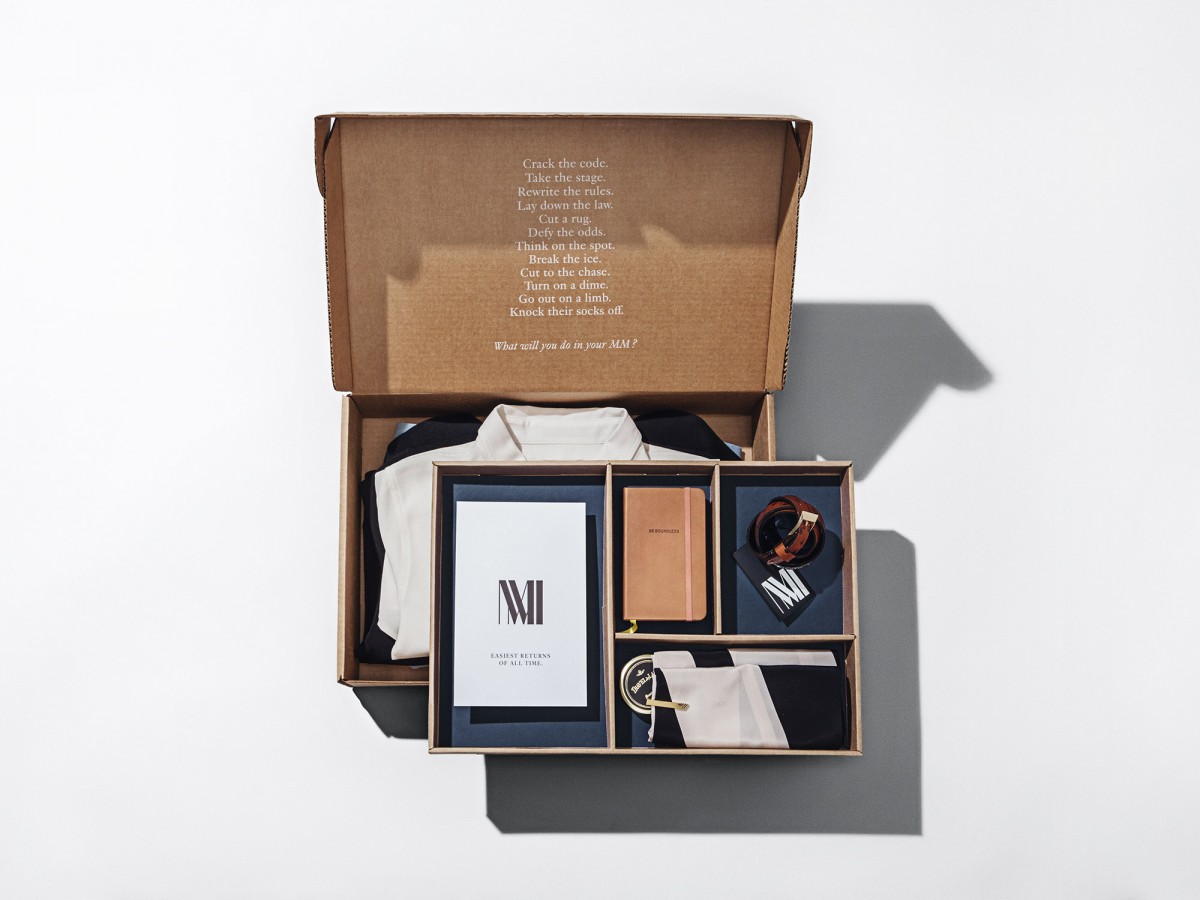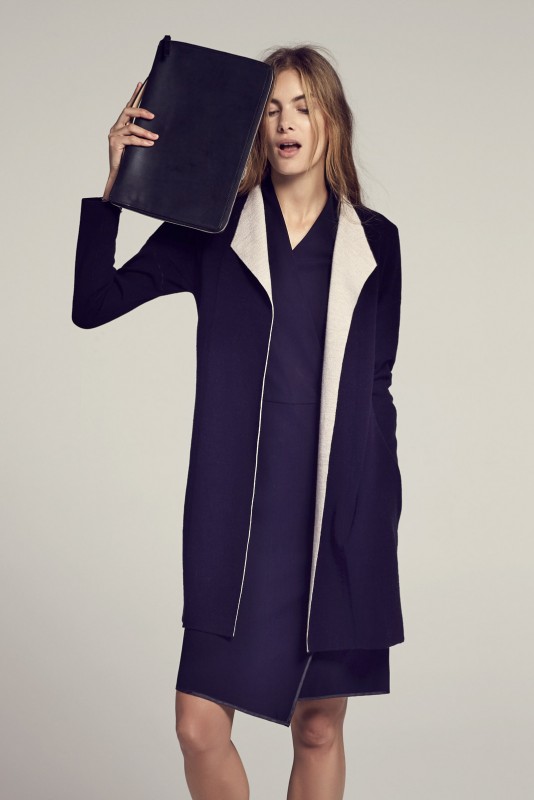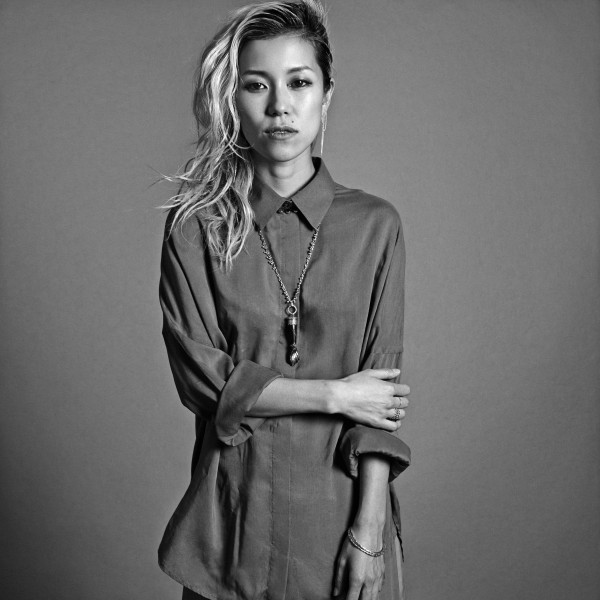MM.LaFleur took home the prize for New E-Store on the Block at this year’s Fashion Futures Awards, where The Daily met the company’s founder Sarah LaFleur. The womenswear label caters to professionals (what LaFleur considers a largely ignored category), but the service is the key differentiator. Customers fill out a personal questionnaire, and a team of stylists curate the parfait outfit, which is delivered in a Bento Box. Now MM.LaFleur is expanding at the seams (pun intended) and will nearly double its offerings in 2016. We caught up with the label’s dream team—Sarah, who leads the business end, and head designer Miyako Nakamura, who formerly helmed Zac Posen—about what lies ahead.
Your background isn’t in fashion; how did you end up founding a womenswear brand?
Sarah: I worked in consulting and finance, and getting ready for work in the morning was such a struggle. My mother worked in high fashion, so I was very aware of how poorly manufactured my clothes were. I was making a good salary, but not to shop at Bergdorf or Barneys. I wondered if there was a way to cut out the middlemen.
When did the Bento Box concept come into play?
Sarah: It’s a recent thing for us! It’s what really changed our business. Initially I thought a streamlined collection would be sufficient, but when our customer landed on the site, she was overwhelmed by information. Shopping became stressful, and that wasn’t the point. So we decided to make the decisions for her. Now customers tell us about themselves based on height, profession, color preferences, and we put together a Bento Box. It’s free to try, and you can keep and buy what you like and send back whatever you don’t like.
How many pieces do you offer?
Sarah: We launched with seven dresses. Now it’s about 70 or 80, and by next year we’re talking about 150 to 160.
Who chooses the clothing based on the survey answers?
Sarah: We have a group of stylists who read through every survey and curate a box. Customers get very personal, which is surprising. We’ll have some say, I just had a baby and I’m trying to get comfortable with my new body…Can you help me curate a wardrobe that makes me feel sexy? Or, I just started at a new tech company and I don’t feel cool. Can you help me look cool? It’s never just, Send me skirts! The human element really matters, and having our stylists is a big component.
How do the business and creative sides mesh?
Sarah: For the most part we give Miyako the parameters, and say just work within them and come up with something that feels new. We don’t really interfere beyond that. Our customers make the most suggestions, and Miyako reads every comment that we get. At MM we want to talk about Monday through Friday and 9 to 5—at first for Miyako that was surprising. She’s the first person to tell you she didn’t know there were lawyers who wanted to dress like this! One of the first things we said is, Whatever you do, don’t show the bra strap. And she was like, Wait, you don’t want to show your bra? You don’t want to be sexy? What’s cool about her is she’s pushing the boundaries. Our Unsuitables collection, which we’re launching next year, is Miyako’s take on the power suit, reimagining the way women wear suits.
I have to ask about the Tory dress…
It sold out twice! A fashion blogger called it “the perfect work dress,” and New York Magazine featured it as the look of the week. It slowly started accumulating a wait list…first it was 900 people and then 1,600.
What’s another best-selling item?
The Etsuko dress, which is named after Miyako’s grandmother. It’s super simple; it has pockets, it fits well on a lot of body types, it’s machine washable and wrinkle resistant. This is core MM.
Who do you consider to be your competition?
I think we have two competitors. The first is brands that target professional women, but not quite because they’re billion dollar businesses. The service angle is where we really see ourselves having developed a niche. A lot of our customers use our stylists as their personal stylist, and in some ways that’s something most professional women wouldn’t dream of having. So the second is department stores that offer that service, but they’re going after a customer who spends thousands at their store.
Do you anticipate more companies like yours popping up?
Every now and then I hear of other entrepreneurs who want to get into the professional womenswear space. Initially I used to be threatened by it. But the more people who can break into this space and change the way retail is being offered, the better. The key is being different; if you’re not different, you don’t stand out.
What’s your background in fashion like?
Miyako: I worked for Zac Posen for seven years—I started as an intern and left as head designer. Afterward, I freelanced for Theory and Jason Wu for about three years while we developed the concept for MM.LaFleur.
So what were your responsibilities at Zac Posen?
Miyako: Mainly designing—I worked on every collection and runway show, and I also did special projects, like the launch of his secondary line [ZZP].
Is there any crossover between designing for a label like Zac Posen and MM.LaFleur?
Miyako: Well the specific woman I design for at MM is different from the Zac Posen woman, but the main objective is the same: to make her feel beautiful and confident.
What’s something you’ve learned at MM versus high-fashion labels?
Miyako: Women come in all sizes and shapes, and clothing needs to function just as well for a size 16 as it does for a size 2. When I worked in high fashion, we designed based on the proportions of runway models, which is standard in the industry. At MM, we design for more diverse body types.
What’s your creative process at MM like?
Miyako: I go through roughly the same process you would at a high fashion house, except that I start with function before going into aesthetic research. For our next collection, I wanted to revolutionize the suit, so I brainstormed what that would mean: Knits? Pleats? Jumpsuits? Then I come up with a mood board that integrates this idea of function. When I worked in high fashion, it was the opposite—I searched for visual inspiration first, and then translated that into functional clothing.
And what’s your design team like?
Miyako: Our design team is very small. I believe in working with a small, well-curated group of people so the vision is coherent. You get into a groove and you don’t have to reinvent the wheel with every collection. Our customer is looking to update her wardrobe with variations of things she knows work for her, so it helps to have a core group of people who understand that mindset.
Do you think making the transition from “runway” to “professional workwear” would be challenging for many designers?
Miyako: Yes! You have to completely change your perspective. It’s difficult to open up your mind to reality when you’ve spent your career dreaming—dreaming is important for designers who are tasked to offer “newness” season after season, but when designing professional workwear, consistency is more important than newness. You’re trying to help your customer build a coherent wardrobe rather than continually surprise her.
Where do you see the future of fashion heading?
Miyako: If you define fashion as “art” then I see it hitting its ceiling. We don’t have the luxury of time and resources that we used to have in the industry. I hope the system breaks down so that artists can find a way to express their visions without suffering for the speed of the industry. But if you define fashion as “business,” I see it improving. It’s happening right here at MM.LaFleur. We’re able to cut out a lot of inefficiency through technology. I think the industry is being broken down into smaller brands that are truly innovative. Each business creates its own model that is unique to its customer base. At MM.LaFleur, our operations and business teams constantly blow my mind with how strategic and intelligent they are—and that enables us to get creative on the design side.













